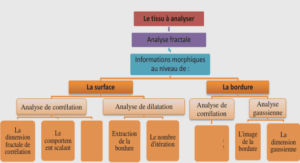INTRODUCTION TO CLINICAL ELECTROCARDIOGRAPHY:
The electrocardiogram is used as a diagnostic test, as well as the clinician’s desire to determine cardiac abnormalities from the body surface potentials. As a rough framework [16], it is worth thinking of the heart as three separate systems: a functional electrical system, a functional system of coronary (or cardiac) arteries to channel nourishing blood to every cell of the myocardium, and as a culmination of these, an effective mechanical pump. First, we consider how an ECG is used to assess electrical abnormalities of the heart: The surface ECG has inherent limitations as a diagnostic tool, since given a distribution of body surface potentials, we cannot precisely specify the detailed electro physiologic behaviour of the source since this inverse problem does not have a unique solution (as demonstrated in 1853 by Hermann von Helmholtz). It is not in general, possible to specify uniquely the characteristics of a current generator from the external potential measurements alone. Therefore, an exacting assessment of the electrical activity of the heart involves an invasive electrode study. Despite these inherent limitations, the surface ECG is extremely useful in clinical assessments of electrical pathologies and an invasive electro physiologic study is indicated in only a small fraction of cases. To a first approximation, electrical problems come in two forms: those that make the heart pump too slowly or infrequently (bradycardias) and those that make the heart pump too quickly (tachycardias). If the pumping is too slow, the cardiac output of life-sustaining blood can be dangerously low. If too quick, the cardiac output can also be too low since the heart does not have time to fill and also because the heart can suffer damage (e.g., demand ischaemia) when it tries to pump too rapidly.
THE NORMAL DETERMINANTS OF HEART RATE: THE AUTONOMIC NERVOUS SYSTEM
One class of heart rate abnormalities arises from abnormal function of the heart rate control system. There are specialised cells in the SA node whose function is to act as the heart’s pacemaker, rhythmically generating action potentials and triggering depolarisation for the rest of the heart (recall that once any portion of the heart depolarises, the wave front tends to propagate throughout the entire myocardium). The SA node has an intrinsic rate of firing but ordinarily this is modified by the central nervous system, specifically, the autonomic nervous system (ANS). The decision-making for autonomic functions occurs in the medulla in the brain stem and the hypothalamus. Instructions from these centres are communicated via nerves that connect the brain to the heart. There are two main sets of nerves serving the sympathetic and the parasympathetic portions of the ANS which both innervate the heart. The sympathetic nervous system is activated during stressful times and increases the rate of SA node firing (hence raising heart rate) and innervates the myocardium itself, increasing the propagation speed of the depolarisation wave front primarily through the AV node and increasing the strength of mechanical contractions. These effects are all consequences of changes to ion channels and gates that occur when the cells are exposed to the messenger chemical from the nerves.
The time necessary for the sympathetic nervous system to actuate these effects is approximately 15 seconds. The sympathetic system works in tandem with the parasympathetic system. For the body as a whole, this system controls quiet-time functions like food digestion. The nerve through which the parasympathetic system communicates with the heart is named the vagus. The parasympathetic branch’s major effect is on heart rate and the velocity of propagation of the action potential through the AV node. Furthermore, in contrast with the sympathetic system, the parasympathetic nerves act quickly, decreasing the velocity through the AV node and slowing the heart rate within a second when they activate. Most organs are innervated by both the sympathetic and the parasympathetic branches of the ANS and the balance between these competing effects determines function. The sympathetic and parasympathetic systems are rarely totally off or on; instead, the body adjusts their levels of activation, known as tone as appropriate to its needs. If a medication that inactivates the sympathetic system (e.g., propranolol) is used on a healthy resting subject with a heart rate of 60 bpm, the classic response is to slow the heart rate to about 50 bpm. If a medication that inactivates the parasympathetic system (e.g., atropine) is used, the classic response is an elevation of the heart rate to about 120 bpm. If you administer both medications and inactivate both systems (parasympathetic and sympathetic withdrawal), the heart rate rises to 100 bpm.
Therefore, in this instance for normal subjects at rest, the effects of the heart rate’s “brake” are greater than the effects of the “accelerator”, although it is the balance of both systems that dictates the heart rate. The body’s normal reaction when the vagal tone is increased (the brake) is to reduce sympathetic tone (the accelerator) simultaneously. Similarly, when sympathetic tone is increased, the parasympathetic tone is usually withdrawn. Indeed, if a person is suddenly startled, the earliest increase in heart rate will simply be due to parasympathetic withdrawal rather than the slower-acting sympathetic activation. So on, what basis does the autonomic system make heart rate adjustments? There are a series of sensors throughout the body that send information back to the brain known as afferent nerves, which bring information to the central nervous system. Those parameters sensed by afferent nerves include the blood pressure in the arteries (baroreceptors), the acid-base conditions in the blood (chemoreceptors) and the pressure within the heart’s walls (mechanoreceptors). Based on this feedback the brain unconsciously adjusts heart rate. The system is predicated on the fact that as heart rate increases, cardiac pumping and blood output should also increase, in turning raising arterial blood pressure, blood flow and oxygen delivery to the peripheral tissues, carbon dioxide clearance from the peripheral tissues, and so on.
When the heart rate is controlled by the SA node’s rate of firing, the sequence of beats is known as a sinus rhythm (see Fig. 2.1). When the SA node fires more quickly than usual (for instance, as a normal physiologic response to fear or an abnormal response due to cocaine intoxication), the rhythm is termed sinus tachycardia (see Fig. 2.2). When the SA node fires more slowly than usual (for instance, either as a normal physiologic response in a very well-conditioned athlete or an abnormal response in an older patient taking too much heart-slowing medication), the rhythm is known as sinus bradycardia (see Fig. 2.3). There may be cyclic variations in heart rate due to breathing, known as sinus arrhythmia (see Fig. 2.4). This non-pathologic pattern is caused by activity of the parasympathetic system (the sympathetic system responds too slowly to alter heart rate on this time scale), which is responding to subtle changes in arterial blood pressure, cardiac filling pressure and the lungs themselves during the respiratory cycle.
LIST OF FIGURES |




